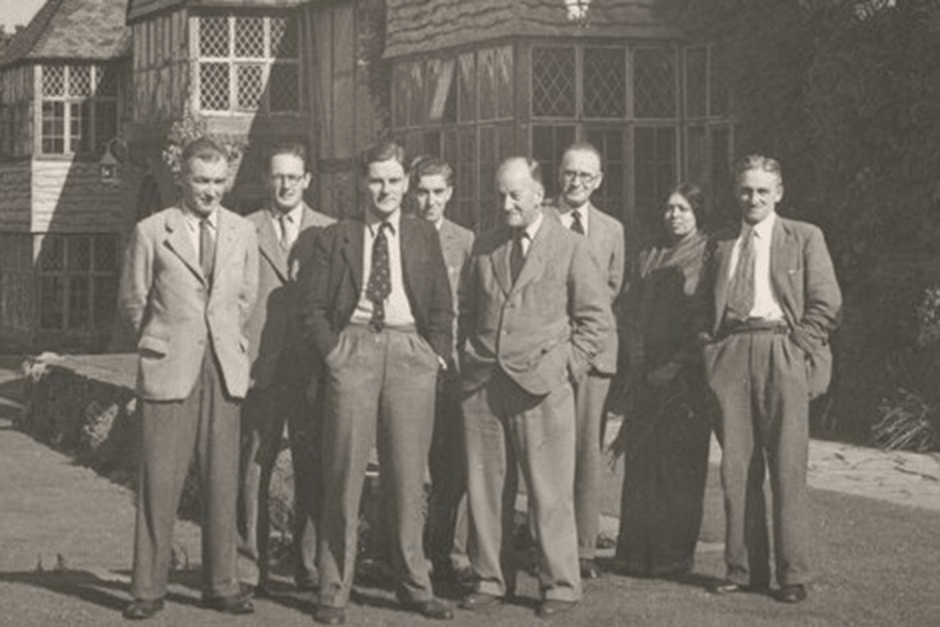
Historical constraints on women pursuing a career in horticulture makes the achievements of those who have succeeded all the more remarkable. Many groundbreaking women have played crucial roles in the development of horticulture be it as designer, scientist, campaigner, plant collector, journalist, artist or gardener.
“It is a woman’s business to be interested in the environment. It’s an extended form of housekeeping.”
Marjory Stoneman Douglas (1890 – 1998)
Key figures in horticulture
Vita Sackville-West (1892-1962)
Award-winning novelist, journalist and garden designer, Vita Sackville-West developed Sissinghurst Castle Garden alongside her husband Harold Nicolson. The garden is designed in the form of ‘Garden Rooms’ – including the famous White Garden – and boasts a fine collection of old roses.
 Ellen Willmott (1858–1934)
Ellen Willmott (1858–1934)
One of only two female recipients of the 60 inaugural RHS Victoria medals (the other was Gertrude Jekyll), Willmott was an exemplary horticulturalist who bred cultivars, created gardens and was key to the foundation of RHS Wisley. Like many accomplished women, Ellen Willmott was reputed to be cold and difficult to deal with. There are stories of her bringing a knuckle-duster and a pistol to RHS meetings and shoplifting in Paris.
Her love of horticulture was infectious, she was known to spread seeds wherever she felt plants were lacking. Eryngium giganteum Miss Willmott’s ghost was so named as this was what she scattered most often. In 2024, RHS Wisley opened a Summerhouse in honour of this trailblazing LGBT pioneer, to whom the RHS and gardeners owe so much.
Scientists

Dr Janaki Ammal with colleagues outside The Old Laboratory at RHS Wisley
Botany was considered an acceptable science for women to study until Carl Linnaeus’ identification of the ‘sexual system’ of plants made some consider the subject unseemly as a pastime for young women. Despite this, female scientists have made significant discoveries and carried out crucial research to help us understand horticulture. These pioneers include:
- Barbara McClintock (1902–1992), awarded the 1983 Nobel Prize in Physiology or Medicine for her work on the discovery of ‘jumping genes’
- Mycologist and illustrator Elsie Wakefield (1886–1972) published around 100 papers on fungi and plants and wrote two field guides on British fungi
- Indian-born Janaki Ammal (1897–1984) became the first woman in the United States to earn a PhD in the field of botany. Her work with cross breeding led to her discovery of variety of sugar cane that could grow well in India and is widely cultivated to this day. Magnolia kobus ‘Janaki Ammal’ is named in her honour
Designers

Gertrude Jekyll (1843–1932)
Known for her impressionist style of planting, garden designer Gertrude Jekyll created more than 400 gardens. A key figure in the Arts and Crafts movement, Jekyll’s many books and writings continue to be a source of inspiration for garden designers.
 Beth Chatto (1923–2018)
Beth Chatto (1923–2018)
Plantswoman, garden designer and author, known for her principle of ‘right plant, right place’ Chatto won 10 consecutive RHS Gold medals at the RHS Chelsea Flower Show.
Her naturalistic planting and wildlife-friendly gardens were considered unusual at the time, with one judge reportedly wanting her disqualified saying her plants were all weeds. Now her legacy can be seen in throughout the showground. Visit Beth Chatto’s garden >
Campaigners
 Wangari Muta Maathai (1940–2011) became the first Black African woman to be awarded a Nobel Peace Prize in 2004. The Green Belt Movement which she founded empowered women to fight deforestation in Kenya, leading to the planting of more than 20 million trees and inspiring the creation of similar projects across Africa
Wangari Muta Maathai (1940–2011) became the first Black African woman to be awarded a Nobel Peace Prize in 2004. The Green Belt Movement which she founded empowered women to fight deforestation in Kenya, leading to the planting of more than 20 million trees and inspiring the creation of similar projects across Africa- British botanical artist Margaret Mee (1909–1988) was one of the first people to highlight the impact of large-scale mining and deforestation on the Amazon basin. In her forties she moved to the Amazon to study and defend the rainforest for the next 30 years
- American conservationist and women’s rights activist, Marjory Stoneman Douglas (1890–1998) dedicated much of her life to defending the Everglades after her 1947 book, The Everglades: River of Grass, exposed the damage being caused by drainage and development. She encouraged women to become more involved in conservation, saying: “It is a woman’s business to be interested in the environment. It’s an extended form of housekeeping.”
Artists

Drawings by Sarah Anne Drake
Many women have applied their artistic skill to their studies of horticulture and in doing so, have vastly increased the knowledge and understanding of plants.
- Marianne North (1830–1890) was a plant collector and illustrator who painted more than 900 species while travelling solo around the world
- Prolific illustrator Sarah Anne Drake (1803–1857) created 1,100 plates for The Botanical Register. She specialised in orchids and has the Drakaea orchid named in recognition of her contribution
- More famous as an author, Beatrix Potter (1866–1943) was a passionate mycologist as well as being intrumental in the conservation of vast areas of The Lake District
You might also be interested in...

